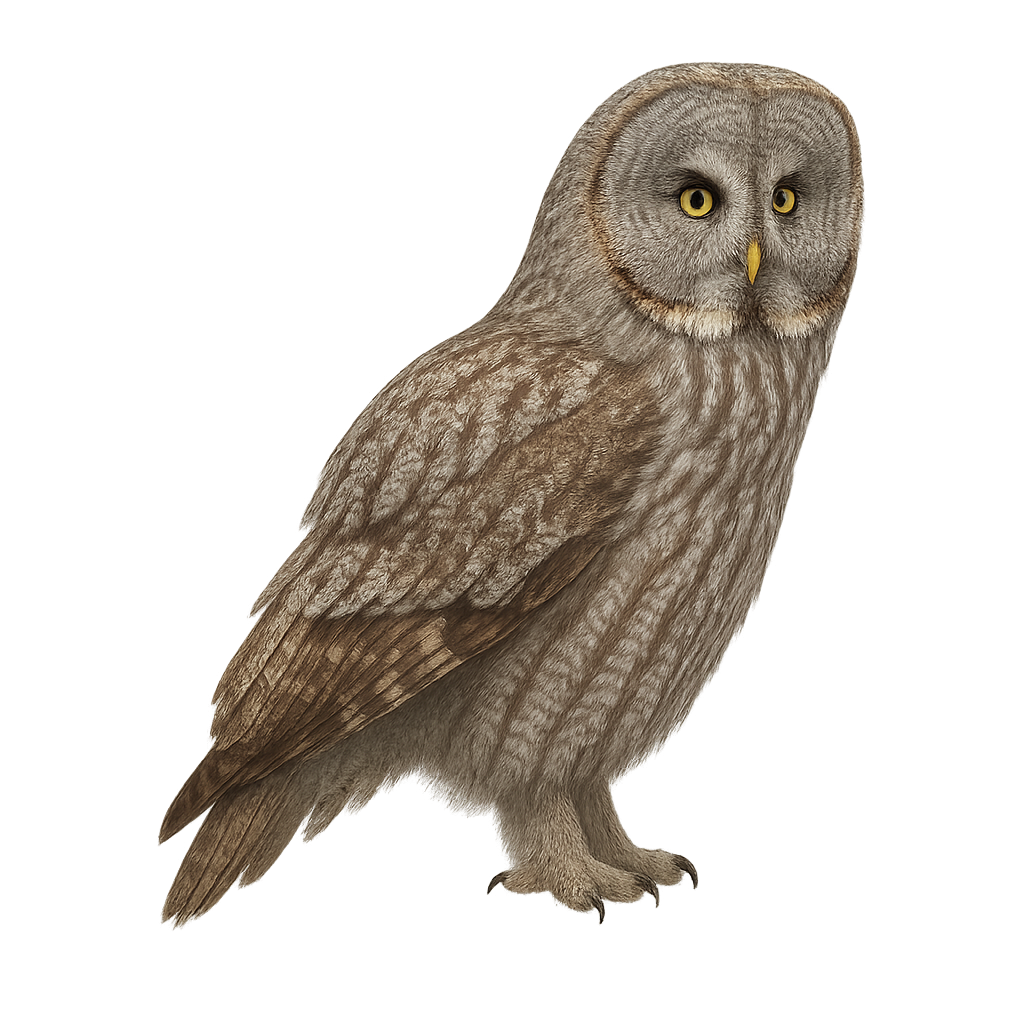Your wildlife photography guide.
Explore the great grey owl in detail, study its behavior, prepare your shots.
Where to observe and photograph the great grey owl in the wild
Learn where and when to spot the great grey owl in the wild, how to identify the species based on distinctive features, and what natural environments it inhabits. The WildlifePhotographer app offers tailored photography tips that reflect the great grey owl’s behavior, helping you capture better wildlife images. Explore the full species profile for key information including description, habitat, active periods, and approach techniques.
Great grey owl
Scientific name: Strix nebulosa

IUCN Status: Least Concern
Family: STRIGIDAE
Group: Birds
Sensitivity to human approach: Suspicious
Minimum approach distance: 50 m
Courtship display: March to April
Incubation: 28-30 jours
Hatchings: March to May
Habitat:
Boreal forests, mountainous regions, and woodlands of the northern parts of Europe, Asia, and North America
Activity period :
Mainly active at night, generally discreet during the day.
Identification and description:
The Great Grey Owl is a large nocturnal raptor, easily recognizable by its broad facial disc and piercing yellow eyes. Its plumage is primarily gray and brown, with lighter markings on the belly and wings. It has a massive build, a round head, and long wings that allow it to fly silently. This raptor primarily inhabits boreal forests and northern regions of Europe, Asia, and North America.
The Great Grey Owl primarily hunts small mammals, such as hares, rodents, and birds. It has a remarkable ability to locate its prey with its keen hearing and silent flight. It is a solitary owl, preferring dense forests where it can hide during the day. While its population remains generally stable, it is threatened by deforestation, habitat loss, and human disturbances. It is protected in many areas to ensure the preservation of its forest habitats.
Recommended lens:
200 mm – adjust based on distance, desired framing (portrait or habitat), and approach conditions.
Photography tips:
Use a telephoto lens to photograph the Great Grey Owl, especially during its nocturnal movements or in dense forested areas. The soft light of morning or evening is ideal for capturing sharp images without disturbing its natural behavior. Be patient and respect its space, especially during the breeding season, to avoid disrupting its habitat.
The WildlifePhotographer App is coming soon!
Be the first to explore the best nature spots, track rutting seasons, log your observations, and observe more wildlife.
Already 1 430 wildlife lovers subscribed worldwide

